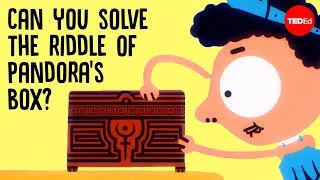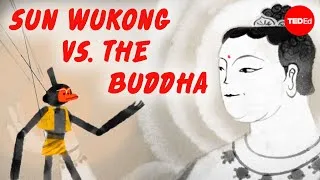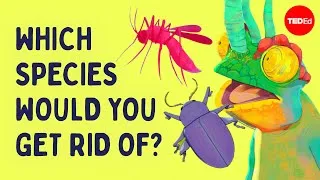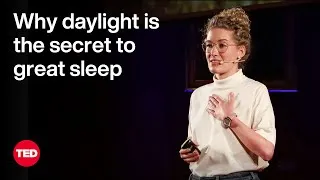請雙擊下方英文字幕播放視頻。
譯者: Lilian Chiu
審譯者: Man Chun Ma
00:07
On an auspicious day
in November of 1986,
0
7573
3914
在 1986 年十一月的
一個黃道吉日,
00:11
5 Australian miners climbed Lunatic Hill—
1
11487
3980
五名澳洲礦工爬上了瘋狂丘——
00:15
so named for the mental state
anyone would be in to dig there.
2
15467
4580
叫瘋狂丘是因為在那裡挖礦的人
精神狀態都會步向發狂。
00:20
While their competitors searched
for opals at a depth of 2 to 5 meters,
3
20047
4948
競爭對手挖掘二到五公尺深
尋找蛋白石,
00:24
the Lunatic Hill Syndicate bored
20 meters into the earth.
4
24995
4958
而這個瘋狂丘團隊
向下鑽入二十公尺。
00:29
And for their audacity, the earth
rewarded them
5
29953
2788
因為他們的大膽,
地球獎勵他們
00:32
with a fist-sized, record breaking opal.
6
32741
3630
破記錄的、有拳頭般大的蛋白石。
00:36
They named it the Halley’s Comet opal,
7
36371
3215
他們稱它為哈雷慧星蛋白石,
00:39
after the much larger rocky, icy body
flying by the earth at that time.
8
39586
5630
因為當時有另一塊更大的
結冰石頭正飛過地球上空。
00:45
The Halley’s Comet opal is a marvel,
but its uniqueness is, paradoxically,
9
45216
5425
哈雷慧星蛋白石是個奇蹟,
但矛盾的是,它的獨特性
正是它最尋常之處。
00:50
the most usual thing about it.
10
50641
3060
00:53
While diamonds, rubies, emeralds,
and other precious stones
11
53701
3350
當鑽石、紅寶石、
綠寶石,及其他寶石
00:57
are often indistinguishably similar,
12
57051
2870
都相似到難以區別,
00:59
no two opals look the same,
13
59921
2600
但蛋白石卻每顆都不一樣,
01:02
thanks to a characteristic
called "play of color."
14
62521
4033
原因是一項叫做「變彩」的特性。
01:06
This shimmering, dazzling, dancing
display of light
15
66554
3540
這種閃爍、耀眼、飛舞的光線呈現
01:10
comes about from a confluence
of chemistry, geology, and optics
16
70094
4821
會受到化學、地理、
光學三種因素的共同影響,
01:14
that define opals from their earliest
moments, deep underground.
17
74915
5138
當蛋白石還在地下深處形成之初
這些因素就定義了它們的色彩。
01:20
It’s there that an opal begins its life
as something surprisingly abundant: water.
18
80053
5936
蛋白石出人意料地誕生於一種
隨處可見的資源當中——水。
01:25
Trickling down through gaps
in soil and rock,
19
85989
3350
水從土壤和岩石的縫隙滴下來,
01:29
water flows through sandstone, limestone,
and basalt,
20
89339
4000
流過沙岩、石灰岩,以及玄武岩,
01:33
picking up a microscopic compound
called silicon dioxide.
21
93339
4724
因而攜帶二氧化矽這種微小化合物。
01:38
This silica-enriched water enters
the voids inside pieces of volcanic rock,
22
98063
5726
這種富含矽的水流進各種縫隙,
包括火山岩、史前河床、木頭,
甚至古生物的骨駭。
01:43
prehistoric river beds, wood
and even the bones of ancient creatures.
23
103789
5334
01:49
Gradually, the water starts to evaporate,
24
109123
3170
漸漸地,水開始蒸發,
01:52
and the silica-solution begins
forming a gel,
25
112293
2960
而矽溶液開始形成膠質,
01:55
within which millions of silica spheres
form layer by layer
26
115253
4530
在膠質中,數百萬個矽球體
開始一層一層形成,
01:59
as a series of concentric shells.
27
119783
2820
變成同心圓式的殼。
02:02
The gel ultimately hardens
into a glass-like material,
28
122603
4134
最終,膠體變硬,
成為像玻璃的材料,
02:06
and the spheres settle
into a lattice structure.
29
126737
3770
球體則沉澱,成為晶格結構。
02:10
The vast majority of the time,
this structure is haphazard,
30
130507
3980
大部分時候,這種結構是隨機的,
02:14
resulting in common, or potch, opals
with unremarkable exteriors.
31
134487
5204
產生出普通無彩的蛋白石,
只有平凡的外觀。
02:19
The tiny, mesmerizing percentage
we call precious opals
32
139691
4754
有極小比例的珍貴蛋白石
02:24
have regions where silica beads
of uniform size form orderly arrays.
33
144445
6112
會在部分區域中有大小一致的
矽珠形成整齊的陣列。
02:30
So why do those structures produce
such vibrant displays?
34
150557
4870
這些結構為什麼會產生
這麼鮮明的色彩呈現?
02:35
The answer lies in a principle of wave
physics called interference.
35
155427
5353
答案在於波的物理原則——干涉。
02:40
For the sake of simplicity,
36
160780
1343
為了簡單解釋起見,
看看當單一顏色的光——
02:42
let’s look at what happens
when a single color of light—
37
162123
3010
02:45
green, with a wavelength of 500
nanometers— hits a precious opal.
38
165133
5383
綠色,波長五百奈米——
射中珍貴的蛋白石時會如何。
02:50
The green light will scatter throughout
the gemstone
39
170516
3310
綠光會在寶石內部四散,
02:53
and reflect back with varying intensities—
40
173826
3310
並以不同的強度反射回來,
02:57
from most angles suffused,
from some entirely dimmed,
41
177136
4175
大部分角度是分散的光線,
有些則是非常暗淡,
03:01
and others dazzlingly bright.
42
181311
2930
其他則是耀眼奪目。
03:04
What’s happening is, some of the green
light reflects off of the top layer.
43
184241
5351
實際的狀況是,
有些綠光被最上層反射。
03:09
Some reflects off of the layer below that.
44
189592
2880
有些則是被再下面一層
反射,以此類推。
03:12
And so on.
45
192472
1250
03:13
When the additional distance it travels
from one layer to the next, and back,
46
193722
4891
如果光從一層到下一層
再回來所走的額外距離
03:18
is a multiple of the wavelength—
such as 500 or 1000 extra nanometers—
47
198613
6942
剛好是波長的倍數——
比如額外的五百或一千奈米——
03:25
the crests and valleys of the waves
match each other.
48
205555
4339
波峰和波谷就會配對上。
03:29
This phenomenon is called
constructive interference,
49
209894
3544
這個現象叫做相長(建設性)干涉,
03:33
and it amplifies the wave,
producing a brighter color.
50
213438
4120
它會把波放大,產生更亮的顏色。
03:37
So if you position your eye
at the correct angle,
51
217558
3400
所以,如果你把眼睛放在對的角度,
03:40
the green light reflecting from many
layers adds together.
52
220958
4872
從許多不同層反射
出來的綠光會合在一起。
03:45
Shift the angle just a bit,
53
225830
2180
稍微調整一下角度,
03:48
and you change the distance
the light travels between layers.
54
228010
3720
就會改變光在兩層之間行走的距離。
03:51
Change it enough, and you’ll reach a point
where the crests match the valleys,
55
231730
4628
改變得夠多,就會達到某個點,
讓波峰對上波谷,
03:56
making the waves cancel each other out—
that’s destructive interference.
56
236358
6371
讓波彼此抵消——
那就是相消(破壞性)干涉。
04:02
Different colors have different
wavelengths,
57
242729
2980
不同顏色的光有不同的波長,
04:05
which translates to varying distances
they have to travel
58
245709
3170
也就意味著它們若要產生相長干涉,
04:08
to constructively interfere.
59
248879
2350
會需要走不同的距離。
04:11
That’s why colors roughly correspond
to silica bead sizes.
60
251229
4841
那就是為什麼顏色大致上
會和矽珠大小有相應的關係。
04:16
The spaces between 210 nanometer beads
are just right to amplify blue light.
61
256070
7032
兩百一十奈米矽珠之間的空間
正好適合放大藍光。
04:23
For red light, with its long wavelengths,
62
263102
2640
紅光的波長很長,
04:25
the silica beads must be close
to 300 nanometers.
63
265742
3750
因此矽珠必須要隔開約三百奈米。
04:29
Those take a very long time to form,
and because of that,
64
269492
3690
那要花非常多的時間才能形成,
因此,紅色是最罕見的蛋白石顏色。
04:33
red is the rarest opal color.
65
273182
3160
04:36
The differences in the arrangements
of the gel lattices
66
276342
3018
同一塊蛋白石內的膠質
晶格的排列不同
04:39
within a particular stone
result in a wide range of color patterns—
67
279360
4870
會造成不同的顏色圖案——
04:44
everything from broad flash
to pin-fire to the ultra-rare harlequin.
68
284230
6260
從各種潑彩,到星火,
到超稀有的彩紋都有。
04:50
The circumstances that lead
to the formation of precious opal
69
290490
3920
形成珍貴蛋白石的條件非常罕見,
04:54
are so uncommon that they only occur
in a handful of places.
70
294410
4930
以至產出的地方屈指可數。
04:59
About 95% come from Australia,
71
299340
3060
95% 來自澳洲,
05:02
where an ancient inland sea
created the perfect conditions.
72
302400
4647
那裡古老的內海創造了完美的條件。
05:07
It was there that the Halley’s Comet opal
formed some 100 million years ago.
73
307047
6120
哈雷慧星蛋白石就是
一億年前左右在那裡形成的。
05:13
Which raises the question:
in the next 100 million years,
74
313167
4117
這就帶出了一個問題:
在接下來的一億年,
05:17
silica-rich water will percolate
through the nooks and crannies
75
317284
3580
富含矽的水會浸透
一些人類文明廢棄文物的角落和裂縫。
05:20
of some of the discarded artifacts
of human civilization.
76
320864
4125
05:24
What opalescent plays of light
will one day radiate
77
324989
4121
這些被我們遺忘在黑暗中的東西,
將來有一天會散發出
什麼樣的蛋白石變彩?
05:29
from the things we forget in the darkness?
78
329110
4484
New videos
關於本網站
本網站將向您介紹對學習英語有用的 YouTube 視頻。 您將看到來自世界各地的一流教師教授的英語課程。 雙擊每個視頻頁面上顯示的英文字幕,從那裡播放視頻。 字幕與視頻播放同步滾動。 如果您有任何意見或要求,請使用此聯繫表與我們聯繫。







